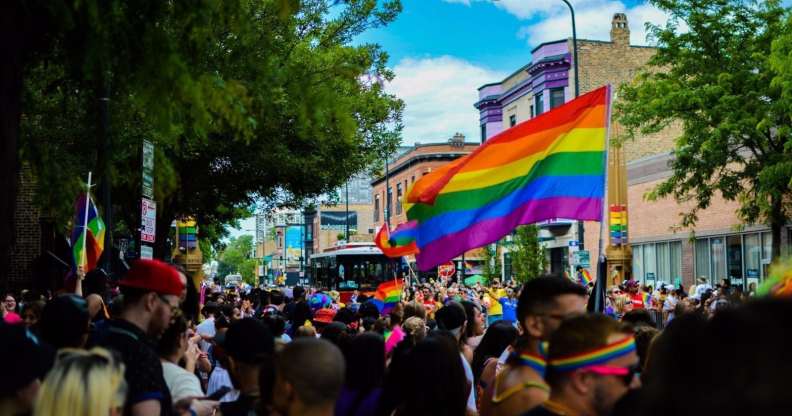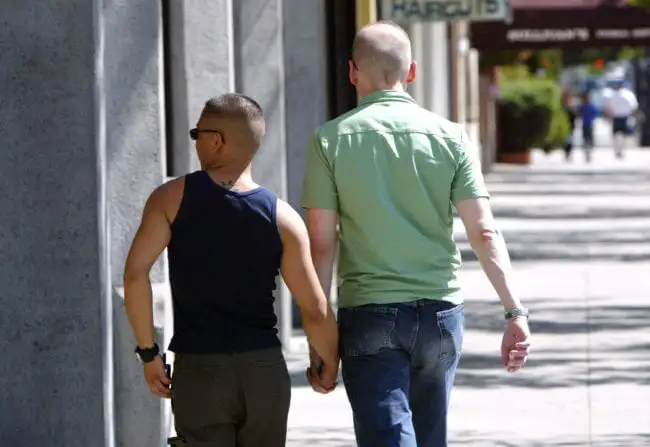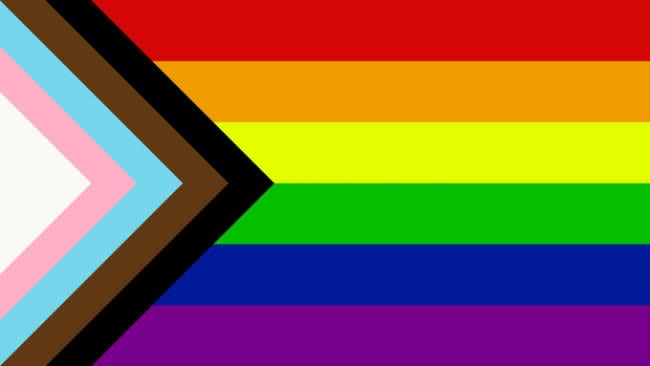Older LGBT people don’t want black or brown stripes added to the rainbow flag, survey reveals

Most older LGBTQ people are opposed to having black and brown stripes added to the rainbow pride flag, a new survey suggests.
Across the United States, 880 LGBTQ adults were asked how they would feel about the incorporation of the new colours into San Francisco artist Gilbert Baker’s original, six-colour design. The results indicated that while millennials and nonwhite people who identified as lesbian, gay, bisexual, queer or trans were more inclined to support the new look; gay men, white people and baby boomers were most reluctant.
The survey was conducted by Whitman Insight Strategies and BuzzFeed News. It was part of a larger study that aimed to document all aspects of non-straight people’s lives, from politics to identity, in an attempt to investigate and highlight racial bias within the gay community.

The survey indicated that older LGBTQ people, gay men and white people were less enthusiastic about black and brown stripes being added to the existing pride flag (Justin Sullivan/Getty)
Many activists have wanted to see black and brown stripes introduced into the flag for quite some time as a way to help stamp out that prejudice. Some hope it would also emphasise the inclusivity of queer people of colour, a group that have long felt that their contributions and activism to progressing the lives of LGBTQ folks have been white-washed.
Back in 2017, ad agency Tierney added the stripes and hoisted the new flag outside Philadelphia City Hall, in honour of Pride Month. The act was said to be in response to its underlying problem with racism in its gay bars. Around the time, it had also been reported as many as 11 venues had recently been required to take anti-racism training after a number of complaints were made.

Graphic designer Daniel Quasar’s re-booted Pride flag (Kickstarter)
“The stripes [on the original rainbow flag] were not chosen for skin color — they were chosen to reflect the spectrum of color in nature,” a longtime friend of Baker’s Charley Beal told NBC when asked about the flag. “The only thing we would ask is that other people would not take it and put Gilbert’s name on it, because they didn’t do it in consultation with him, and he didn’t do it.”
Despite his insistence that Baker never intended to exclude anyone with his design and he worries a new flag might suggest otherwise, Beal added that he understood the message behind the update and backed it’s good intentions.
Philadelphia’s new pride flag later encouraged non-binary designer Daniel Quasar to push inclusion even further. They unveiled their rebooted version which saw black, brown, blue, white and pink stripes – (to more visibly celebrate trans people) – on Instagram earlier this year.

